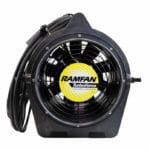As global warming continues to threaten our planet and weather calamities are ever-present, the climate is changing, whether we are ready or not. Luckily, power and electrical companies are ready for the challenge, as they continue to unveil greener technology and drive the focus towards renewable energy sources. With fresh innovation, comes new challenges, particularly as the electric grid becomes increasingly more complicated and modernized. As communications over power lines increase, the need for a power quality analyzer becomes apparent. When it comes to power quality, a small change in voltage or signal can have a mighty impact on the power grid.
So, what can go wrong?
Rapid Voltage Change (RVC)
When it comes to renewable energy sources, such as wind or solar energy, fluctuation is the name of the game. Since the sun (or the wind) depends heavily on the weather, the time of day, and the location, the power generated is not constant, resulting in a highly fluctuating output. This phenomenon creates Rapid Voltage Changes (RVC) on the power line, which are small and quick disruptions, often leading to flickering lights or equipment tripping off line.
Mains Signaling
What do humans, animals, and electronics all have in common? We all need to communicate! For equipment on a power grid, communication comes in the form of small, ripple signals sent over the power lines. These signals can turn equipment on and off, depending on the energy load needed. Like all great communicators though, miscommunication is possible. Sometimes, ripple signals result in the wrong action, like street lights turning on in the morning and off when it gets dark.
Inter Harmonics
Inter harmonics are harmonic frequencies (multiples of the fundamental frequency) that are between the harmonic orders. Normally, they are very low – causing few, if any problems. Unfortunately, they become significantly amplified if the inter-harmonic frequency happens to be at a resonance value of a piece of equipment, potentially inducing catastrophic equipment failures.
High-Speed Transients
High-speed transients are small (microsecond), low energy transients, that are typically dampened out by a few meters of cable – posing no significant threat. However, in areas with limited cable runs or solar panels, which are prone to rapid changes in solar radiation, repeating high speed transients are possible. In these cases, high-speed transients can damage sensitive electronics. Residential and small commercial properties with solar panels are particularly prone to the damage of repeating high-speed transients.
Although many power quality problems are simply just small, rapid fluctuations in energy, signal, or frequency, they can create massive damage and induce a widespread impact on the power grid if not diagnosed early. With a smart, powerful, and easy-to-use power quality analyzer, these small problems, stay small, so the power stays on.








